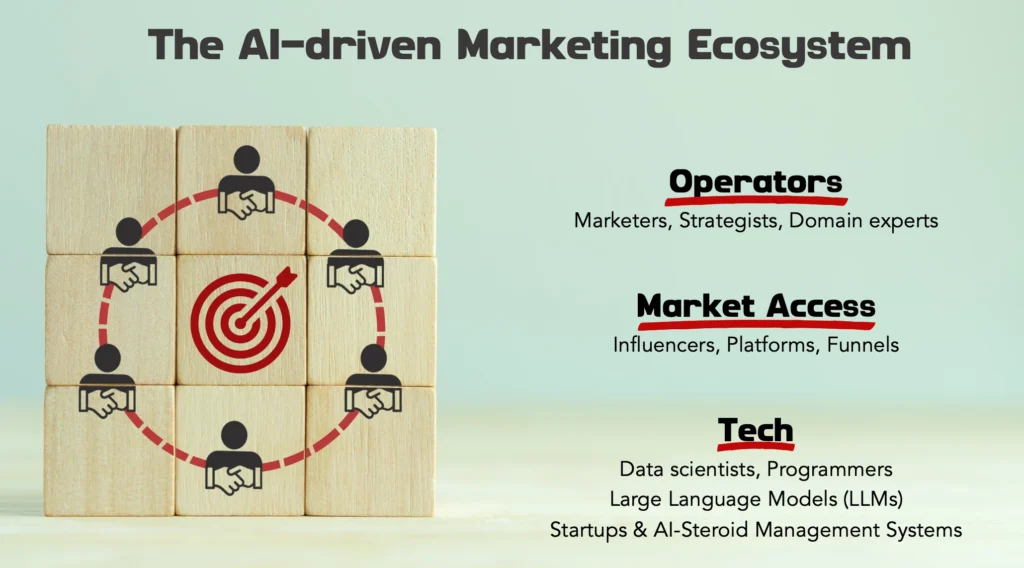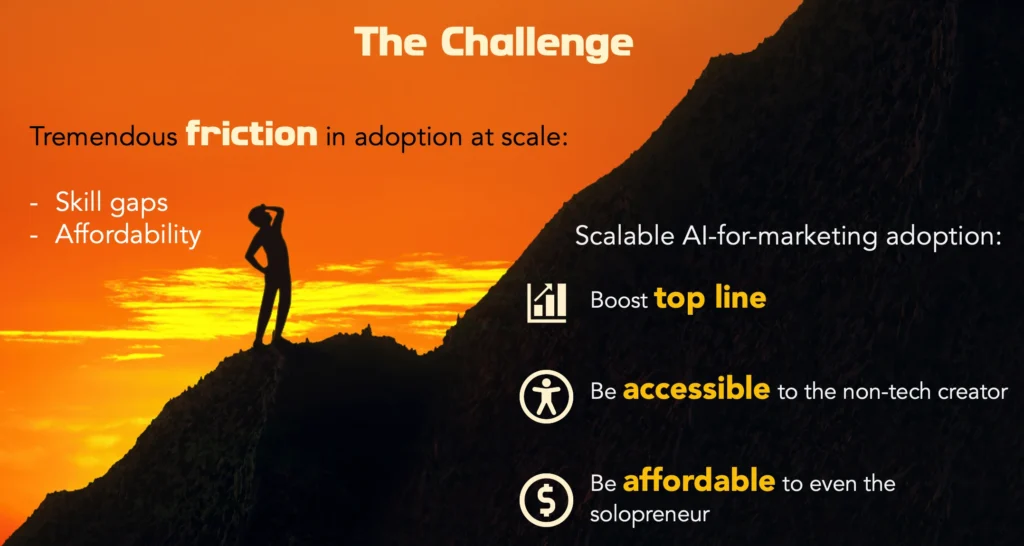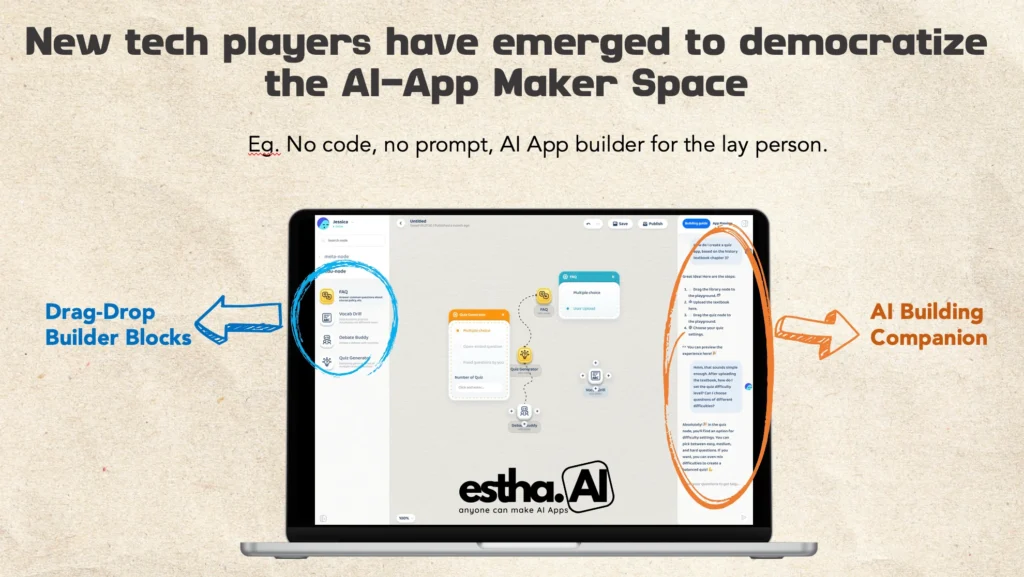(This is a summary of my keynote at the SP Jain Global Business Conclave on AI Marketing Ecosystems: what it means, what it is, what’s the big deal, and where we may be off the mark.)
Sometime around 2001, the Japanese car maker, Honda, sent its engineers to observe truck drivers in car parks and other locations in the USA. The aim: to find out as much about how these truck drivers behaved, went about their businesses, the routines, methods, work flow and probably most importantly, the work arounds to get their jobs done. The point: to gather and analyse this data and use it to refine the design of the Ridgeline, that would be Honda’s first North American truck. The truck was launched in 2005 and sold more than 50,000 units in 2006. This helped Honda carve out a niche among buyers looking for a unique mid-size pickup with car-like handling and features. Imagine the amount of information that these engineers collected and how much data designers and marketers at Honda needed to process before arriving at the design of the Ridgeline and the strategies to get its unique advantages out to the target market.
Now imagine having all this data ingested and crunched by AI, so that marketers could use Gen-AI to brainstorm and get into casual ‘focus group’ conversations with a virtual target “customer”, or just test their ideas with these personas before going into the market to test with real people? Could costs be saved, new insights be generated, and could things have turned out differently?
This was the image I presented to the audience when I delivered a keynote at the SP Jain Global Business Conclave on Marketing and AI Ecosystems. And I wasn’t alone in this line of thought: in a thought leadership firechat moderated by Samer Elhajjah, experts have indicated that interactive persona testing could be one of the trends in how Gen-AI may be deployed by marketers. With the apt use of Gen-AI, experts feel that Gen-AI can amplify all types of work, enabling scale of those already know their craft. This means working faster, doing more at lower costs, aka scaling.
And the range of possibilities is big: from lead generation bots to sounding boards / bots to help us generate new ideas, to creation tools that help us produce new content or present them in new and more powerful ways.
Taking it further, some AI software are can already automate a range of tasks with a simple prompt, or instruction to say, reply all unread emails in your inbox. Pretty powerful and scary stuff.
It’s not all that rosy though
“AI will take over everything, from teaching to programming.” I heard this from someone recently. He is convinced that all that we know about human endeavours will be replaced by AI in the foreseeable future. Now before we all think that AI will be able to do just about anything we want it to do, I shared this piece of anecdote to the audience at the Business Conclave:
A best friend of mine has been asking me to help him refine his speeches. She is an excellent leader and a powerful operator who leads from the front, but she isn’t all that strong in find the right words to put across convincingly what she means, while I am pretty good at that. So everytime she needs to deliver a speech in public, she would send me her draft for my review and touch up. And it’s been quite easy doing this. You see, her drafts were often what they would be: carelessly written draft mesh of points she wanted to put across, without an appropriate flow and the language used was, well, just direct and sometimes curt. Quite often, it would take me less than 20 minutes to make those changes and return a script with a totally new character but puts across his points in just the way she wanted.
But one of her latest draft was different – I tried for three weeks to make it better and in the end, I returned my best effort that wasn’t up to par. I was curious and asked her what made her write so differently this time. Her reply: “Oh, I asked Gen-AI (not gonna tell you which one) to write it for me.”
No wonder.
What I learned from this episode about output from Gen-AI? It isn’t bad. Just not great. If what you want is to get off with a ‘pass’ mark, then by all means go ahead (do it ethically please). But what you want is brilliance, then Gen-AI isn’t ready as yet.
In a HBR article, Alexandra Samuel advocates that we should get “gen AI to help with (our) writing, not do (our) writing for (us).” The author is poignant in warning us: Resist using AI to write your first draft, because once you’ve done that, it can be hard to find your own words.
The New Possibilities with Gen-AI & LLMs in marketing
Yet, we are increasingly seeing new ways of doing business with the clever use of Gen-AI. For example, beyond the typical narrative of automating processes with AI, we could use Gen-AI to turn a content product into a marketing funnel to generate high quality leads for our customers. What’s even more delightful is that the end user may not even need to pay for this service we provide through our AI agents because someone else is footing the billing – in some sense, innovative business models are likely to emerge where literarily everyone wins.
But if the potential of this AI 2.0 is so huge, why isn’t everyone jumping into it? To answer this, we need to explore the ecosystem surrounding the use of AI for marketing.
Making it happen: The AI-driven Marketing Ecosystem & Why it Fails
Most AI ecosystems would comprise the following players:
a. The Operators – the domain experts and strategists who examine lots of data to design messages, campaigns, strategies that make their brands and products stand out, and stick around for a long time.
b. The Access folks – people, entities or platforms that let us reach our customers. These could range from social platforms to distributors or owners of billboard or advertising spaces, physical or online.
c. The Tech folks – essentially anyone who helps the Operators and Access folks to do their job right, fast, efficient, and in some cases, breakthrough into new opportunities.

Let’s look at two groups of users here:
Think of a big company with lots of money. They can easily use AI in their marketing because they can hire experts. They have Operators who create interesting campaigns, Access folks who help them reach people, and Tech experts who make sure everything works well. For them, using AI is simple and effective.
Now think of small businesses or individuals working alone. They are skilled and knowledgeable, but they don’t have the money to hire many tech experts. They also don’t know much about coding. This makes it hard for them to use AI quickly and easily. The lack of skills and money makes it tough for small businesses to adopt AI.
For AI to help with marketing, it should not only increase sales but also be easy and affordable for people who don’t have tech skills. This way, everyone can start using AI on their own.

That was the problem I faced when I wanted to create an expert tutor bot that ingests the textbooks that I have written in junior high Biology and can respond to my students 24/7. Let’s call it ASK BIO. To make that happen, I needed to engage an AI-for-education company to create this bot with the content in my textbook. And this is where it breaks down for me: first, it would cost me significantly as service fees to this company; then the company would want to share a significant amount of sales proceeds as the service fees quoted to me features a partner discount with revenue-sharing.
It just didn’t make financial sense to do it this way.
I was stuck.
A New Breed of AI-Enablers to let anyone make an AI App in minutes
With a dead-end in launching my own AI App as a non-techie, I started looking around for solutions that let the idiots in tech design, build and launch their AI Apps. It has to be so easy to use and can let me do so in minutes. And if I am lazy enough, perhaps even lets me do away with prompting.
More and more, we are seeing platforms that allow AI to do the coding. For example, Cursor AI helps users by providing intelligent code completion and suggestions, making it easier for developers to write code. But then I stumbled upon Estha (https://estha.ai), a no-code AI App builder platform that does so much more for those who can’t code at all.

Estha is designed for people like me – those with lots of knowledge and ideas but little to no coding experience. It means I can now bring my vision to life without needing a whole team of tech experts. Estha’s drag-and-drop platform that lets me design, build, and launch interactive AI apps in minutes. I don’t need to write a single line of code. Imagine creating a custom AI tutor, sales assistant, or customer service bot just by dragging and linking elements on a screen. It’s that simple.
One of the standout features of Estha is the choice of many Large Language Models (LLMs). I can pick the one that best suits my needs, making my AI app truly bespoke. But what really makes Estha special is its ability to create exclusive knowledge bases unique to my content and expertise.
What impressed me most was the low-friction onboarding — I describe my intent, and Estha proposes a design. I can then tweak it as needed, making the whole process smooth and accessible.
For educators, this is a game-changer. Each teacher can launch their own AI-powered tutor app, tailored to their curriculum. For small businesses, it means one can create lead-generation bots or customer support agents without breaking the bank. Law firms can deploy proprietary analysis agents, and companies can have personalized virtual assistants, all while keeping their data secure.
I decided to invest in this company and wrote them the first check before jumping in to be a co-founder. Investing in Estha as a tool that democratizes AI, empowering anyone with ideas to leverage this powerful technology for success – a no brainer for me.
So where are we now with AI for marketing?
In short, things are better, but still not profoundly spectacular. AI can do many things, but it is nowhere near where we think it can be. But then this space is moving so quickly and we should not come back to check in on what’s the latest develop at least once every two months.
This space is still starting to heat up, and for those of us who get in on the action now, we will be in for a heck of a ride!
